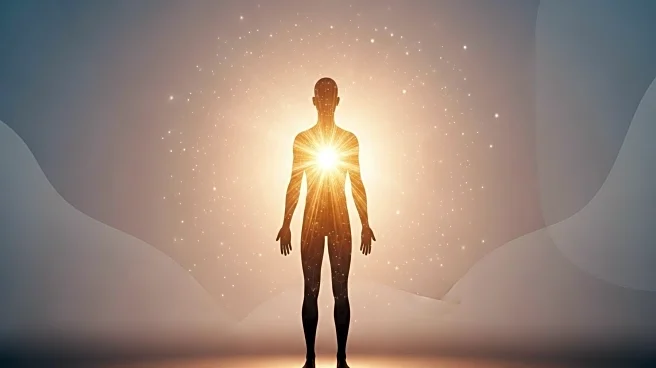What is the story about?
What's Happening?
Researchers from the University of Calgary and the National Research Council of Canada have discovered that human bodies emit faint biophotons, a phenomenon known as ultra-weak photon emission (UPE), which ceases upon death. This light emission is linked to oxidative metabolism in mitochondria, where energy production and oxygen reactions result in biophoton release. The study, published in The Journal of Physical Chemistry Letters, involved experiments on mice, revealing a significant reduction in photon emission post-mortem. The research also observed similar emissions in plants, particularly in stressed or injured leaves, suggesting UPE as an indicator of vitality and stress response.
Why It's Important?
The discovery of biophoton emissions has significant implications for health monitoring and biological research. By providing a non-invasive method to assess the health and stress responses of living organisms, UPE could revolutionize medical diagnostics and ecological monitoring. In humans, it may offer insights into disease progression and treatment responses, while in plants, it could aid in agricultural and ecological applications. This scientific understanding demystifies the phenomenon, previously associated with mystical concepts, and emphasizes its biochemical nature, encouraging further research into its functional significance.
What's Next?
Future research is likely to focus on exploring the potential applications of UPE in medical diagnostics and ecological monitoring. Scientists may investigate how biophoton emissions can be used to track disease progression or treatment efficacy in humans, and assess plant health and stress levels in agriculture. As understanding of UPE deepens, it could lead to advancements in both fields, offering real-time insights into biological processes and stress responses.
Beyond the Headlines
The study of biophoton emissions challenges mystical interpretations of luminescence in living beings, placing it firmly within the realm of biological processes. This scientific perspective dispels myths and highlights the potential for UPE to contribute to medical and ecological advancements. As researchers continue to explore this phenomenon, it may transform approaches to health monitoring and ecological conservation.
AI Generated Content
Do you find this article useful?















